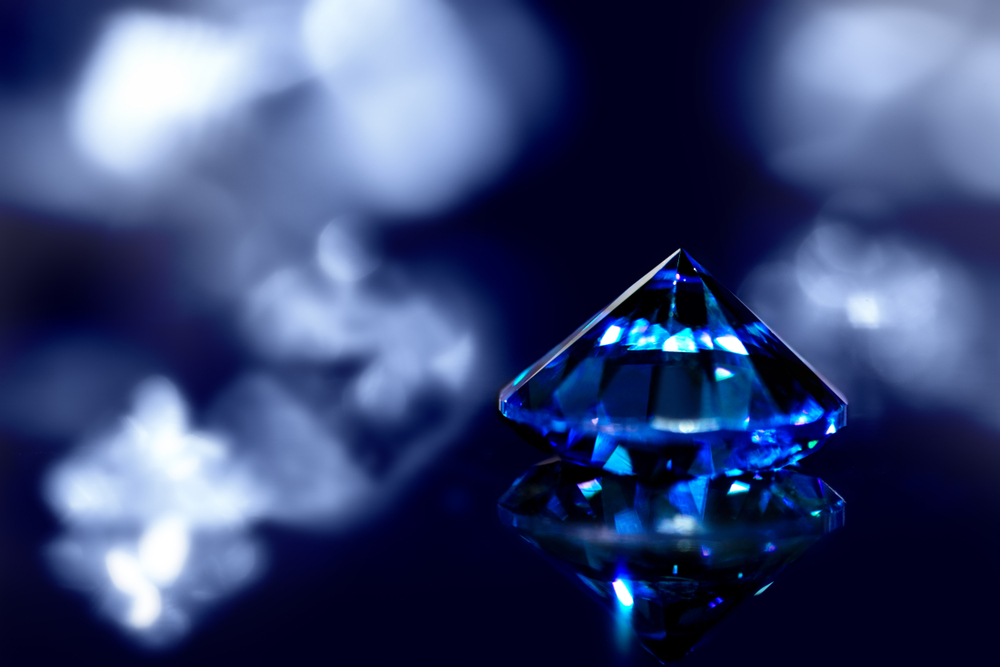Since 1947, Insaco has been synonymous with excellence in the development and production of high precision machined parts. As a custom fabricator of ceramic, glass, sapphire, and other hard materials, Insaco specialize in machining parts that often require tolerances measured in millionths of an inch, and wear properties that satisfy even the most demanding applications.

Image Credit: Shutterstock/Miriam Doerr Martin Frommherz
Crystal Structure of Sapphire
Sapphire is an anisotropic, rhombohedral crystal form of Aluminum Oxide.
Anisotropic single crystal materials exhibit some properties such as thermal expansion and hardness which vary significantly by orientation. For most applications this is unimportant, however it should be considered. Insaco has more than 60 years of experience with this material and we can provide considerable insight as to how orientation might affect your application.
Sapphire is also "birefringent" which is an optical refractive property that offsets wave transmission up to 0.8% at right angles to the optic axis. Birefringence is eliminated along the optic or C-axis of the crystal. Therefore, for certain optical applications, C-axis sapphire should be specified to avoid this effect.
.jpg)
Industrial Sapphire
Industrial sapphire is created by melting aluminum oxide (Al2O3) at 2040°C and then encouraging crystal growth with a seed and careful control of the environment. Growers have developed several unique methods for growth, with varying levels of resultant quality, size, and cost. The EFG or Stephanov methods allow the directed growth of shapes like ribbon, or even tubes, however there are many limitations to what can be done. The Czochralski, HEM, or Kiropolous methods allow the highest optical quality sapphire, but the result is a rod like "blob" of crystal called a boule, that must be entirely machined into useable shapes and sizes.
Sapphire and Ruby are actually the same material with small amounts of chromium (typically = 0.05% by weight) added which affects color and optical properties, while not affecting mechanical, thermal and electrical properties significantly.
Physical and Mechanical Properties of Sapphire
|
Property
|
Value
|
|
General
|
|
Chemical Formula
|
?-Al2O3
|
|
Mechanical
|
|
Density
|
3.97 gm/cc
|
|
Hardness
|
2200 Knoop perpendicular to the c-axis
1900 Knoop parallel to the c-Axis
|
|
Tensile Strength
|
58 kpsi
|
|
Modulus of Elasticity
|
68 x 106 psi
|
|
Flexural Strength
|
100 kpsi
|
|
Compressive Strength
|
425 kpsi
|
|
Poisson's Ratio
|
~ 0.28 (Varies with orientation)
|
|
Electrical
|
|
Dielectric Strength
|
1200 ac V/mil
|
|
Dielectric Constant
|
9.3 - 11.5 (@ 1 MHz) (parallel to the c-axis)
|
|
Volume Resistivity
|
> 1014 ohm-cm2
|
|
Thermal
|
|
Coefficient of Thermal Expansion
|
4.3 x 10-6/°C (perpendicular to the c-axis)
5.4 x 10-6/°C (parallel to the c-axis)
|
|
Thermal Conductivity
|
46.0 W/mK
|
|
Specific Heat
|
0.16 cal/g °C
|
|
Maximum Working Temperature
|
2000 °C
|
|
Optical
|
|
Index of Refraction
|
1.768 (Ordinary ray, No, c-axis)
1.760 (Extraordinary ray, Ne, c-axis)
|
|
Birefringence
|
0.008 (No-Ne)
|
|
Transmission Band
|
0.3 - 5.0 Wavelength (microns)
> 80% transmission
|
All properties are at room temperature unless otherwise noted.
Engineering data are representative, and are not intended as absolute nor warrantable. Manufacturer's Data shown is blended from multiple sources and therefore illustrates the marketplace.
.jpg)
This information has been sourced, reviewed and adapted from materials provided by INSACO Inc.
For more information on this source, please visit INSACO Inc.